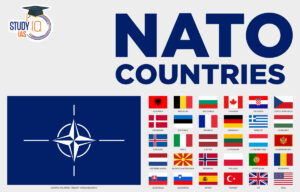Table of Contents
Approach to the answer
- Context: Begin by mentioning how social media and encrypted messaging platforms have revolutionized communication globally, enabling instant connections and information sharing.
- Emerging Security Threats: Highlight the potential misuse of these platforms for nefarious purposes, such as spreading misinformation, radicalization, planning criminal activities, and terrorist operations due to encryption and anonymity
- Need for Action: Emphasize the growing need to address these security concerns through effective measures and policies.
Measures Adopted to Address Security Implications:
- Governmental Measures:
- IT Regulations: Laws like India’s IT Rules, 2021, require platforms to remove illegal content and appoint compliance officers.
- Cybercrime Units: Specialized units monitor threats, track extremist content, and enforce platform compliance.
- Social Media Platforms:
- AI Moderation: Platforms use AI to flag/remove harmful content.
- Transparency: Regular reporting on takedown requests and privacy.
- Fact-Checking: Collaborations to curb misinformation.
- International Collaboration:
- Global Internet Forum (GIFCT): Major platforms collaborate to counter terrorism online.
- Cybersecurity Cooperation: Nations share threat data and collaborate on response strategies.
- Public Awareness:
- Digital Literacy Campaigns: Educating users on online safety and misinformation.
- Educational Programs: Cybersecurity integrated into curriculums.
- Law Enforcement:
- Surveillance Laws: Laws granting access to encrypted data for national security.
- Cyber Task Forces: Dedicated units monitor social media for security threats.
Suggested Remedies:
- Strengthening Encryption Laws: Introduce policies that allow lawful access to encrypted communication without compromising user privacy, ensuring that law enforcement can act in emergencies.
- Advanced AI and Machine Learning Tools: Invest in more sophisticated AI and machine learning systems to detect and prevent the spread of harmful content at a faster rate.
- Example: AI-powered Content Analysis: Google’s Content ID detects 99% of copyright infringement (Source: Google, 2020)
- Mandatory Identity Verification: Implement policies for identity verification on social media to prevent the anonymous spread of misinformation and online harassment, while safeguarding individual privacy.
- Example: Blockchain-based Authentication: Estonia’s e-Residency program uses blockchain for secure identity verification (Source: Estonia e-Residency, 2020)
- Public-Private Partnerships:
- Foster deeper collaboration between governments, tech companies, and civil society to create standardized protocols for handling social media-related security threats.
- Cybersecurity Infrastructure:
- Build robust national cybersecurity infrastructure to protect critical digital infrastructure from social media-related threats and ensure rapid response in case of cyberattacks.
Conclusion:
Addressing the security challenges posed by social media and encrypted messaging services requires a multi-pronged approach combining regulation, technology, international cooperation, and user education. A balanced approach that ensures both national security and the protection of individual privacy is essential.


 NATO Countries List 2025, Members, Funct...
NATO Countries List 2025, Members, Funct...
 UPSC Prelims Syllabus 2025 PDF, Check Su...
UPSC Prelims Syllabus 2025 PDF, Check Su...
 UPSC Toppers 2024 Felicitation Program b...
UPSC Toppers 2024 Felicitation Program b...





















